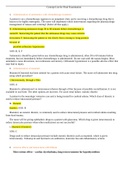Samenvatting
Summary of the MOOC online course in coursera of innovation management
Summary of the MOOC course of innovation management in coursera. All lessons are transcripted including all examples and concepts. Very useful if you don't have time to watch the course.
[Meer zien]













